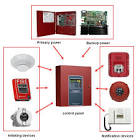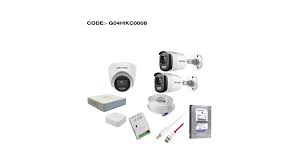Fire Detection: Ensuring Safety and Prompt Response
Fire is a devastating force that can cause immense damage to life, property, and the environment. In order to mitigate the risks associated with fire outbreaks, it is crucial to have effective fire detection systems in place. These systems play a vital role in ensuring the safety of individuals and enabling prompt response in case of a fire emergency.
Fire detection systems are designed to detect the presence of smoke, heat, or flames and provide early warning signals. They are typically comprised of various components such as smoke detectors, heat detectors, flame detectors, control panels, and alarms. These components work together to detect potential fires and alert occupants or authorities immediately.
One of the most common types of fire detection devices is smoke detectors. They are highly effective in detecting smoke particles in the air, which is often an early indication of a fire. Smoke detectors can be either ionization-based or photoelectric-based. Ionization smoke detectors use a small amount of radioactive material to ionize the air inside the detector chamber, while photoelectric smoke detectors use a light source and sensor to detect smoke particles.
Heat detectors are another important component of fire detection systems. They are designed to sense rapid increases in temperature or high ambient temperatures that may indicate a fire. Heat detectors can be classified into two types: fixed temperature detectors and rate-of-rise detectors. Fixed temperature detectors operate when a specific temperature threshold is reached, while rate-of-rise detectors trigger an alarm if the temperature rises rapidly within a short period.
Flame detectors are specialized devices that detect flames by sensing their unique infrared signatures. These devices are particularly useful in environments where fires may not produce significant amounts of smoke but can still pose a threat.
Once any of these fire detection devices sense potential danger, they transmit signals to a central control panel which then activates alarms throughout the building or facility. Alarms can be audible (such as sirens or bells) or visual (such as flashing lights). In some advanced systems, alarms can also be connected to emergency communication systems, allowing for immediate evacuation instructions to be broadcasted.
Fire detection systems are not only crucial for protecting lives but also for minimizing property damage. By detecting fires at their early stages, these systems provide valuable time for occupants to evacuate safely and for emergency responders to arrive on the scene swiftly. This timely response can significantly reduce the spread of fire and limit its destructive impact.
It is important to note that fire detection systems should be regularly inspected, tested, and maintained to ensure their proper functioning. Regular inspections help identify any faults or issues with the system components, allowing for timely repairs or replacements.
In conclusion, fire detection systems are indispensable tools in safeguarding lives and property from the devastating effects of fires. By promptly detecting potential fire hazards and alerting occupants or authorities, these systems enable swift action and effective response. Investing in reliable fire detection technology is a crucial step towards creating a safer environment for everyone.
Frequently Asked Questions About Fire Detection Systems
- What are the different types of fire detection systems?
- How do fire detection systems work?
- What are the benefits of having a fire detection system installed?
- What is the cost of installing a fire detection system?
- How often should a fire detection system be tested and maintained?
- Are there any regulations or codes that must be followed when installing a fire detection system?
What are the different types of fire detection systems?
There are several different types of fire detection systems available, each designed to detect fires based on different factors. Here are some of the most common types:
- Smoke Detectors: Smoke detectors are widely used in fire detection systems. They can be either ionization-based or photoelectric-based. Ionization smoke detectors use a small amount of radioactive material to ionize the air inside the detector chamber, and when smoke particles enter, it disrupts the ionization process, triggering an alarm. Photoelectric smoke detectors use a light source and sensor to detect smoke particles that enter the chamber.
- Heat Detectors: Heat detectors are designed to sense rapid increases in temperature or high ambient temperatures that may indicate a fire. There are two main types of heat detectors: fixed temperature detectors and rate-of-rise detectors. Fixed temperature detectors activate when a specific temperature threshold is reached, while rate-of-rise detectors trigger an alarm if the temperature rises rapidly within a short period.
- Flame Detectors: Flame detectors are specialized devices that detect flames by sensing their unique infrared signatures. These devices are particularly useful in environments where fires may not produce significant amounts of smoke but can still pose a threat.
- Gas Detectors: Gas detectors are used to detect the presence of specific gases that may indicate a fire or potential fire hazard, such as carbon monoxide (CO) or methane (CH4). These detectors can be standalone devices or integrated into larger fire detection systems.
- Aspirating Smoke Detection Systems (ASD): ASD systems use pipes with sampling holes to actively draw air from different areas into a central detector unit for analysis. This allows for early detection of smoke particles even before they become visible.
- Flame Ionization Detectors (FIDs): FIDs work by detecting ions produced by combustion gases in the presence of flames. These detectors can quickly identify the presence of open flames and trigger alarms accordingly.
- Linear Heat Detection Systems (LHD): LHD systems use heat-sensitive cables or fibers that can detect heat along their entire length. When the temperature reaches a certain threshold, it triggers an alarm.
These are just a few examples of the different types of fire detection systems available. The choice of system depends on factors such as the specific fire risks in a particular environment, the level of sensitivity required, and any regulatory requirements that need to be met. It is important to consult with fire safety professionals to determine the most appropriate fire detection system for a given situation.
How do fire detection systems work?
Fire detection systems work by utilizing various sensors and components to detect the presence of smoke, heat, or flames. Here is a general overview of how these systems operate:
Smoke Detection: Smoke detectors are one of the primary components of fire detection systems. They use either ionization or photoelectric technology to sense the presence of smoke particles in the air.
– Ionization Smoke Detectors: These detectors contain a small amount of radioactive material that ionizes the air inside the detector chamber. When smoke enters the chamber, it disrupts the ionization process, triggering an alarm.
– Photoelectric Smoke Detectors: These detectors use a light source and a sensor to detect smoke particles. When smoke enters the chamber, it scatters the light beam, causing it to reach the sensor and trigger an alarm.
Heat Detection: Heat detectors are designed to sense rapid increases in temperature or high ambient temperatures that may indicate a fire.
– Fixed Temperature Detectors: These detectors operate when a specific temperature threshold is reached. Once that temperature is exceeded, they trigger an alarm.
– Rate-of-Rise Detectors: These detectors monitor temperature changes over time. If the temperature rises rapidly within a short period, indicating a potential fire, they activate an alarm.
Flame Detection: Flame detectors are specialized devices that detect flames by sensing their unique infrared signatures. They can identify specific wavelengths emitted by flames and distinguish them from other sources of infrared radiation.
Control Panel: The control panel acts as the central hub for all components in the fire detection system. It receives signals from smoke detectors, heat detectors, flame detectors, and other devices connected to it.
Alarms: When any of the sensors detect potential danger and transmit signals to the control panel, it activates alarms throughout the building or facility. Alarms can be audible (such as sirens or bells) or visual (such as flashing lights). In advanced systems, alarms can also be connected to emergency communication systems for broadcasting evacuation instructions.
Monitoring and Response: Some fire detection systems are connected to a monitoring service or a central station that receives alerts from the system. In case of an alarm, the monitoring service can notify emergency responders, enabling a quick response to the fire incident.
Regular inspection, testing, and maintenance are essential to ensure that fire detection systems are in proper working condition. This includes checking sensor sensitivity, replacing batteries, cleaning detectors, and conducting periodic system tests.
By combining these components and technologies, fire detection systems provide early warning signals that help protect lives and minimize property damage in the event of a fire emergency.
What are the benefits of having a fire detection system installed?
Having a fire detection system installed offers numerous benefits, all of which contribute to the overall safety and protection of individuals and property. Here are some key advantages:
- Early Fire Detection: Fire detection systems are designed to detect fires at their early stages, often before they can spread or cause significant damage. By providing early warning signals, these systems allow occupants to evacuate safely and enable prompt response from emergency services.
- Life Safety: The primary benefit of fire detection systems is ensuring the safety of individuals within a building or facility. By alerting occupants to the presence of a fire, these systems give them valuable time to evacuate before the situation becomes dangerous.
- Property Protection: Fire outbreaks can result in extensive property damage, including structural damage and loss of valuable assets. With a fire detection system in place, potential fires can be detected quickly, allowing for immediate action to minimize damage and protect property.
- Swift Response: Fire detection systems are connected to central control panels that trigger alarms throughout the building or facility when a fire is detected. These alarms prompt immediate response from occupants and can also alert emergency services, enabling them to respond swiftly and effectively.
- Integration with Other Systems: Fire detection systems can be integrated with other safety systems such as sprinkler systems or emergency communication systems. This integration ensures a coordinated response during emergencies and enhances overall safety measures.
- Compliance with Regulations: Many jurisdictions have strict regulations regarding fire safety in commercial buildings and public spaces. Installing a fire detection system helps ensure compliance with these regulations, avoiding legal penalties and potential liability issues.
- Peace of Mind: Knowing that a reliable fire detection system is in place provides peace of mind for building owners, managers, and occupants alike. It creates a sense of security, knowing that potential fires will be detected early, allowing for swift action and minimizing risks.
- Cost Savings: While the initial investment in a fire detection system may seem significant, it can lead to long-term cost savings. By detecting fires early and reducing damage, these systems can potentially lower insurance premiums and minimize the financial impact of fire-related incidents.
- Remote Monitoring: Many modern fire detection systems offer remote monitoring capabilities. This allows building owners or facility managers to monitor the system’s status, receive alerts, and even control certain functions remotely, enhancing convenience and ensuring continuous surveillance.
In conclusion, having a fire detection system installed provides multiple benefits ranging from early fire detection and life safety to property protection and compliance with regulations. These systems offer peace of mind, swift response in emergencies, and potential cost savings in the long run. Investing in a reliable fire detection system is a crucial step towards safeguarding lives, property, and ensuring overall safety.
What is the cost of installing a fire detection system?
The cost of installing a fire detection system can vary significantly depending on various factors such as the size and layout of the building, the complexity of the system, the chosen components and technology, and any additional requirements or customization needed. It is important to note that fire detection systems are typically tailored to specific needs and compliance regulations, so the cost can vary from one project to another.
As a general guideline, basic fire detection systems with standard components such as smoke detectors, heat detectors, control panels, and alarms can start at a few thousand dollars. However, more complex systems with advanced features like flame detectors, integrated emergency communication systems, or remote monitoring capabilities can cost significantly more.
It is recommended to consult with professional fire safety companies or system integrators who specialize in designing and installing fire detection systems. They will assess your specific requirements and provide you with a detailed proposal outlining the estimated costs involved.
Additionally, it’s important to consider ongoing costs for maintenance, inspections, and potential upgrades or expansions in the future. Regular maintenance is crucial to ensure that the system remains in optimal working condition and compliant with safety standards.
Keep in mind that investing in a reliable and high-quality fire detection system is essential for ensuring the safety of occupants and protecting valuable assets. Cutting corners on costs may compromise the effectiveness of the system or lead to potential safety risks. Therefore, it is advisable to prioritize quality and compliance over solely focusing on upfront costs when considering the installation of a fire detection system.
How often should a fire detection system be tested and maintained?
A fire detection system should be tested and maintained regularly to ensure its proper functioning. The frequency of testing and maintenance may vary depending on several factors, including the type of system, the environment it is installed in, and local regulations. However, here are some general guidelines:
- Regular Testing: Fire detection systems should undergo regular testing to verify that all components are functioning correctly. This includes testing smoke detectors, heat detectors, flame detectors, control panels, alarms, and any other relevant devices. It is recommended to perform testing at least once a year.
- Monthly Inspections: In addition to annual testing, monthly inspections can help identify any visible issues or obstructions that may affect the performance of the system. During these inspections, ensure that all detectors are free from dust or debris and that there are no physical damages or signs of tampering.
- Prompt Repairs: If any faults or malfunctions are discovered during testing or inspections, it is crucial to address them promptly. Repairs should be carried out by qualified technicians who have expertise in fire detection systems.
- Battery Replacement: Many fire detection systems rely on batteries as a backup power source. It is important to regularly check the condition of these batteries and replace them as recommended by the manufacturer or local regulations.
- Compliance with Regulations: Different regions may have specific regulations regarding the maintenance and testing of fire detection systems. It is essential to stay updated with these regulations and ensure compliance accordingly.
- Professional Maintenance Contracts: Some organizations opt for professional maintenance contracts with certified service providers who specialize in fire detection systems. These contracts typically include regular inspections, testing, maintenance, and emergency support as needed.
Remember that maintaining accurate records of all tests, inspections, repairs, and replacements is essential for compliance purposes and for tracking the performance history of the system.
Ultimately, it is advisable to consult with a qualified fire safety professional or refer to local regulations for specific guidelines on how often a fire detection system should be tested and maintained in your area.
Are there any regulations or codes that must be followed when installing a fire detection system?
Yes, there are several regulations and codes that must be followed when installing a fire detection system. These regulations and codes vary by country and region, but they generally aim to ensure the proper design, installation, and maintenance of fire detection systems. Here are some common examples:
- National Fire Protection Association (NFPA) Codes: The NFPA develops and publishes various codes and standards related to fire safety, including NFPA 72 – National Fire Alarm and Signaling Code. This code provides guidelines for the installation, testing, inspection, and maintenance of fire alarm systems.
- International Building Code (IBC): The IBC is a widely adopted building code that includes provisions for fire protection systems, including fire detection systems. It outlines requirements for the design, installation, and performance of these systems in different types of buildings.
- Local Building Codes: Many jurisdictions have their own building codes that include specific requirements for fire detection systems. These codes may address aspects such as system design, equipment standards, placement of detectors, wiring methods, monitoring requirements, and more.
- Occupational Safety and Health Administration (OSHA) Regulations: OSHA has regulations pertaining to workplace safety that may include requirements for fire detection systems in commercial or industrial settings. These regulations aim to protect employees from potential fire hazards in the workplace.
- Insurance Requirements: Insurance companies often have specific requirements regarding fire detection systems in order to provide coverage or determine premium rates. Compliance with certain standards or codes may be necessary to meet insurance requirements.
It is important to consult with local authorities having jurisdiction (AHJ), such as fire departments or building departments, to determine the specific regulations and codes applicable to your area. They can provide guidance on compliance requirements and ensure that your fire detection system meets the necessary standards for installation and operation.
Additionally, it is recommended to engage professional fire protection system installers or consultants who are knowledgeable about local regulations and codes. They can help design and install a system that meets the requirements and ensures the safety and compliance of your facility.




